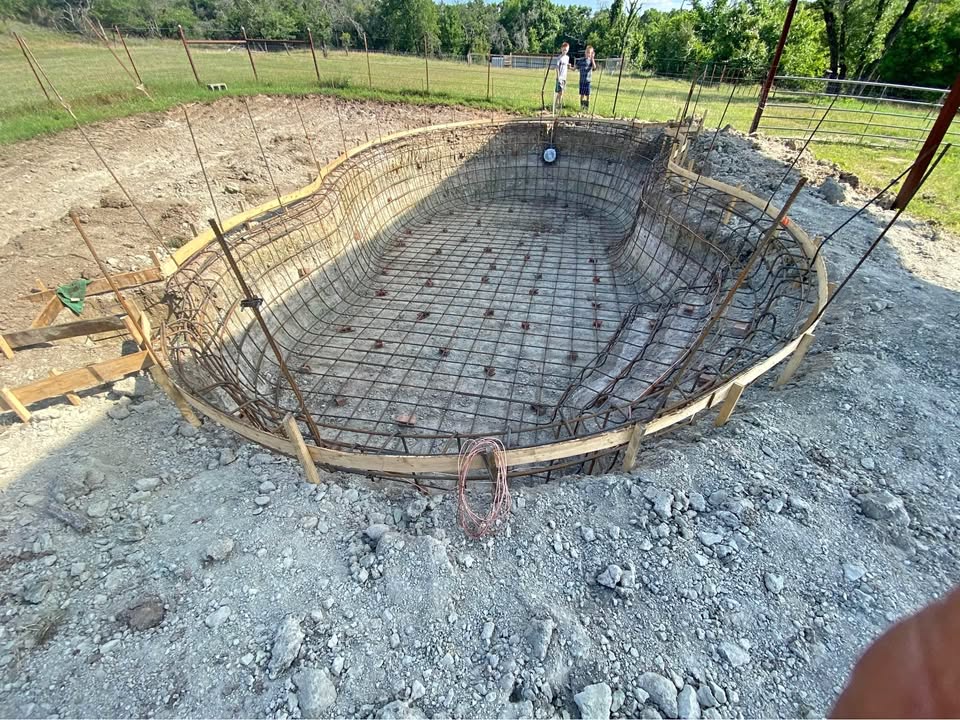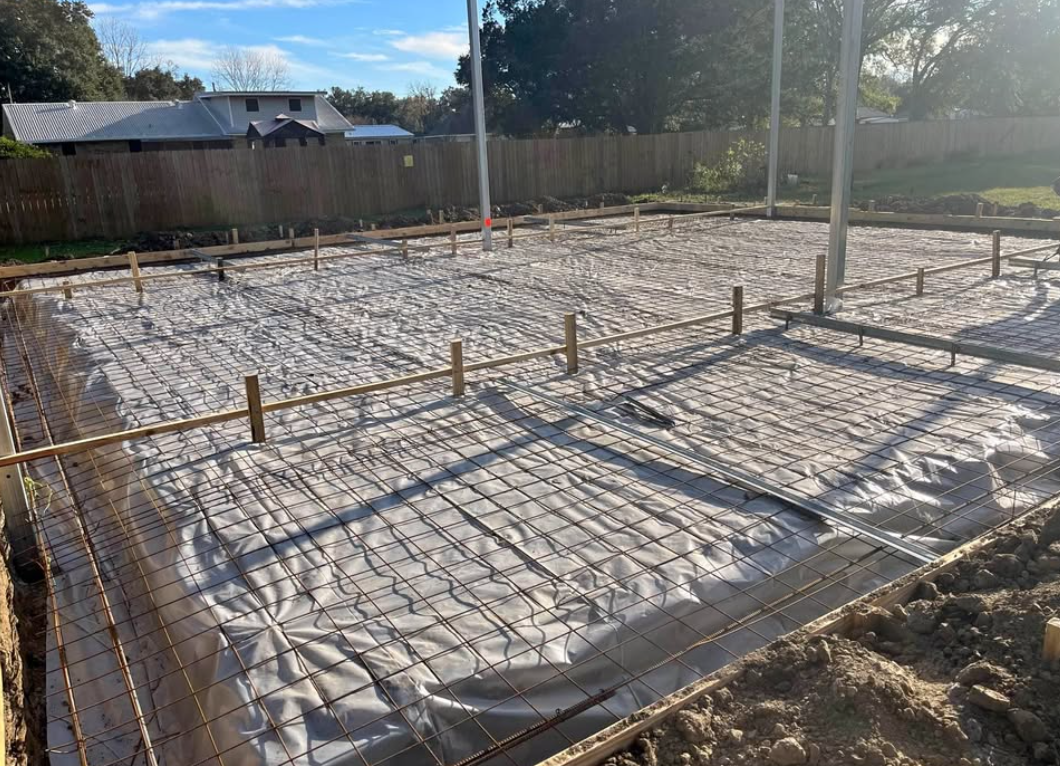Discover 9 Types of Bridges
11 Lectura mínima
)
mayo 13, 2024
Bridges are essential systems in modern infrastructure, connecting regions separated via limitations like rivers, valleys, or roads. They are available in several designs, every tailor-made to particular environmental conditions, materials, and spans. Below, we discover the number one kind of bridge, highlighting how every is uniquely appropriate to its purpose.
1. Beam Bridge:
:format(webp)) Lake Pontchartrain Causeway in Louisiana, USA, is one of the longest-lasting beam bridges globally, stretching at some point from Lake Pontchartrain.
Lake Pontchartrain Causeway in Louisiana, USA, is one of the longest-lasting beam bridges globally, stretching at some point from Lake Pontchartrain.
Parts: Horizontal beams and piers at each forestall.
Purpose: The most straightforward structural shape of a bridge, the beam bridge, features an instantly horizontal beam supported by piers at both ends. The load on the beam bridge is commonly vertical, transferred at once to the piers and eventually into the ground. It is most appropriate for quick distances.
2. Truss Bridge:
:format(webp)) Bollman Truss Railroad Bridge in Savage, Maryland, USA, showcases historic truss design applied in railway advent.
Bollman Truss Railroad Bridge in Savage, Maryland, USA, showcases historic truss design applied in railway advent.
Parts: Trusses manufactured from triangular devices, deck, and piers.
Purpose: The truss structure provides an inflexible frame that distributes the weight more flippantly than a smooth beam. Truss bridges can span longer distances than beam bridges because the truss adds sizable stiffness and decreases the bending moments acting at the shape.
3. Arch Bridge:
:format(webp)) Ponte Vecchio in Florence, Italy, is a medieval stone arch bridge mentioned for its shops built alongside it.
Ponte Vecchio in Florence, Italy, is a medieval stone arch bridge mentioned for its shops built alongside it.
Parts: Curved arches, abutments.
Purpose: The arch bears the weight and pushes the forces outward along the curve to the abutments at either element. This design is inherently sturdy and might carry more weight than a beam bridge. The arch bridge is efficient in spanning extensive areas and looks aesthetically captivating.
4. Suspension Bridge:
:format(webp)) Golden Gate Bridge in San Francisco, California, USA, is one of the most iconic suspension bridges.
Golden Gate Bridge in San Francisco, California, USA, is one of the most iconic suspension bridges.
Parts: Cables, towers, deck, anchors.
Purpose: The towers preserve the principal cables, which keep vertical "suspender" cables that help the deck. This layout allows for extraordinarily prolonged spans in widespread water or valley crossings. The cables disperse the weight via anxiety forces into the towers and downward into the ground.
5. Cable-Stayed Bridge:
:format(webp))
Millau Viaduct in southern France is the tallest bridge in the international community and functions in a lovely cable-stayed layout.
Parts: Cables, towers, deck.
Purpose: In a cable-stayed bridge, the cables attach immediately from the tower to the deck at diverse intervals. This permits the direct transfer of load through the cables to the towers, making it appropriate for longer spans than truss bridges but with much less cloth than wanted for a suspension bridge.
6. Cantilever Bridge:
:format(webp)) Forth Bridge in Scotland is a high instance of a cantilever bridge with an extraordinary industrial look.
Forth Bridge in Scotland is a high instance of a cantilever bridge with an extraordinary industrial look.
Parts: Cantilever fingers, crucial span, piers.
Purpose: The cantilever palms mission into space and are supported only on one quit. They are regularly utilized in pairs that expand from opposite factors and meet inside the centre, now and again, with a smooth beam connecting them. This layout allows for massive spans without piers inside the centre, making it exceptional for situations wherein the widespread part of the bridge can't have facilitates.
7. Tied-Arch Bridge:
:format(webp)) Fremont Bridge in Portland, Oregon, USA, is an awesome tian excellentidge.
Fremont Bridge in Portland, Oregon, USA, is an awesome tian excellentidge.
Parts: Arch, ties, deck.
Purpose: The arch enables the deck simultaneously because the binds prevent the arch from spreading outward due to weight. This form effectively combines the advantages of an arch and a beam and is particularly useful in situations where a conventional arch can't be supported at the ends.
8. Floating Bridge:
:format(webp)) Evergreen Point Floating Bridge in Washington, USA, is the longest floating bridge.
Evergreen Point Floating Bridge in Washington, USA, is the longest floating bridge.
Parts: Pontoon sections or barges, anchors, deck.
Purpose: Typically used in bodies of water with fallacious conditions for traditional foundations, floating bridges relax on large pontoons or barges that support the deck. These bridges flow into the water but are anchored securely to prevent undue motion.
9. Movable Bridge:
:format(webp)) Tower Bridge in London, England, is a world-over-identified bascule bridge open to visitors to the Thames River web page.
Tower Bridge in London, England, is a world-over-identified bascule bridge open to visitors to the Thames River web page.
Parts: Moving mechanism (bascule, swing, or raise factors), counterweights, control towers.
Purpose: Movable bridges are designed to allow boat or supply traffic to skip through. They may be lifted, swung open, or otherwise moved temporarily. While complicated in terms of mechanical additives, they may be crucial in navigable waters.
Bridge Types Based on Mobility
Bridges can also be classified primarily based on their mobility and the functionality to change features to address site visitors on the road and inside the water. Here are the primary sorts of bridges classified with the aid of their mobility:
1. Fixed Bridges:
Most beam, arch, and cable-stayed bridges fall into this class. Fixed bridges are the most common kind and do not pass. They are designed to stay in a single area entirely and to cope with all loads and environmental situations, with no alternate features.
2. Movable Bridges:
These bridges are designed to permit navigation or distinctive varieties of traffic to pass through. Movable bridges may also be categorised into numerous types based on their particular motion mechanisms.
Types:
Bascule Bridges:
Also known as drawbridges, those use a counterweight to raise the roadway around a horizontal hinge and pivot factor.
Swing Bridges:
These rotate horizontally around a fixed point. The middle is usually used to clear the way for boat visitors.
Lift Bridges:
These have a deck that rises vertically even as it closes parallel to the deck, which uses counterweights or hydraulic structures.
3. Retractable Bridges:
Less common than exclusive movable bridges, retractable bridges (or roll-on bridges) slide backward easily in place of lifting or swinging. This kind of structure is used when there may be constrained vertical or horizontal space for the typical actions of a movable bridge. The retractable bridge at the old front to the Brooklyn Navy Yard is one of the few examples.
4. Transporter Bridges:
A much less unusual type, transporter bridges bring a section of roadway to some point of a river or canal. The roadway, or gondola, is suspended from a trolley that runs alongside tracks on an overhead body and can pass from one facet to the opposite. These bridges can accommodate automobiles and pedestrians while permitting water visitors to pass underneath.
The Newport Transporter Bridge in Wales is one of the few operational transporter bridges left globally.
Bridge Types Based on Function
Bridges may be classified primarily based on their number one function, which allows us to determine their layout and structural elements. Here are a few not unusual varieties of bridges categorised with the aid of their feature:
1. Bhighway ridges:
These bridges are designed to hold avenues of website traffic consisting of motors and buses. They often need to fulfil precise load, width, and clearance requirements to address the volume and sort of vehicular site visitors. Most overpasses and flyovers on highways are designed as toll road bridges, regularly using beam, truss, or cable-stayed designs.
2. Railway Bridges:
They are specifically designed to support the load and dynamics of train website online traffic. Railway bridges often require a solid foundation due to the heavy masses and high speeds of trains. Many railway bridges are built using the truss or arch format, which provides the crucial strength encompassing the enduring Forth Bridge in Scotland.
3. Pedestrian Bridges:
These bridges are designed for foot site visitors and, occasionally, bicycles. They are typically smaller and not built to face the heavy loads that car bridges should bear. Safety, accessibility, and aesthetic design are vital issues. Footbridges in parks or amongst homes in city areas, just like the Capilano Suspension Bridge in Canada, awareness of ease of use and minimum environmental effect.
4. Aqueducts:
They move water from a natural supply to a network or agricultural location. These bridges are part of a water management system designed to maintain a specific gradient and protect the water from contamination. Historical examples, such as the Pont du Gard in France, show the use of arch designs to provide energy and a continuous waft of water.
5. Viaducts:
A series of bridges connected in a protracted series to traverse a prolonged or huge valley or a series of limitations. The format typically includes a couple of spans supported via piers. The Millau Viaduct in France is a contemporary example wherein a tall, multi-span cable-stayed bridge crosses a deep valley.
6. Drawbridges:
These movable bridges allow boats and ships to bypass by lifting a bridge section. They are usually located in busy waterways and are crucial in locations where managing every avenue and waterway visitor is essential.
The Tower Bridge in London is a well-known historic drawbridge.
Different Bridge Materials
Bridges are constructed using several substances. Each decided on for its unique houses, which encompass electricity, durability, price, and aesthetic attraction. The fabric preference can extensively affect the layout, manufacturing technique, protection requirements, and bridge lifespan. Here are some of the most customarily used substances in bridge production:
1. Steel:
It's ideal for solid and flexible bridges, such as suspension and truss bridges. It's very sturdy and might bend without breaking.
2. Concrete:
It's common in famous road bridges and arches. It's very long-lasting and may be common without problems while moist.
3. Reinforced Concrete:
Used in which extra power is needed without a bargain more cost. Adds metal bars to concrete, making it more potent against pulling forces.
4. Prestressed Concrete:
It is suitable for longer spans that need to withstand greater tension. The metallic in the concrete is tightened before it is poured, making it even more potent.
5. Stone:
It's used in older or traditional bridges for beauty and durability. It's sturdy and lengthy-lasting, but the stone used varies.
6. Wood:
It's used for smaller, aesthetic bridges like footbridges. It's easy to work with and appears natural; however, it's miles less long-lasting until dealt with.
7. Aluminum and Alloys:
It is helpful for lightweight or transient systems, and it's lighter than metallic and doesn't rust.
8. Composite Materials (like fiber-bolstered polymers):
They are increasingly used for elements of bridges that need to be lightweight and evidence against placed on. They're sturdy, lightweight, and don't rust like metallic.
What Influences Different Bridge Designs?
Different bridge designs are brought on through several forces that they should withstand. Understanding those forces enables engineers to pick the right type and substances for building a bridge. Here are the primary forces that influence bridge designs:
Compression:
A pressure that squishes a few issues together.
Impact on Bridges: This is important in arch bridges, which push this squishing pressure from the middle of the bridge down and out to the ends.
Tension:A force that stretches a few aspects aside.
Impact on Bridges: Crucial in suspension and cable-stayed bridges, the cables are continuously pulled tight to keep up the bridge's deck.
Bending:When something right now gets bent.
Impact on Bridges: Beam bridges bend while heavy masses, like automobiles or trains, drift over them. The bridge needs to be capable of bending a little without breaking.
Torsion:A twisting strain.
Impact on Bridges: Bridges can experience trouble when components twist underneath choppy loads or robust winds, which could harm them if poorly designed.
Shear:When additives of a cloth slide beyond every different in opposite commands.
Impact on Bridges: This happens where the bridge deck meets, enables, and may motivate elements to slide out of the area if it is not adequately secured.
Dynamic Loads:Loads that trade through the years, like motors transferring over a bridge, wind, or earthquakes.
Impact on Bridges: All bridges should be built to address those transferring and changing forces as they should be, in particular in regions with heavy website traffic, strong winds, or earthquakes.

Aaron Kline is the Co-Founder and COO of Boom & Bucket, where he leverages his extensive leadership experience to revolutionize the heavy equipment industry. With a background in building scalable processes and teams from his time as a Naval officer and executive roles in tech, Aaron focuses on introducing cutting-edge technology to construction and agriculture markets. Before Boom & Bucket, he held leadership positions at Skylo and Yard Club (acquired by Caterpillar), and he’s passionate about fostering innovation and driving efficiency in under-digitized industries.














